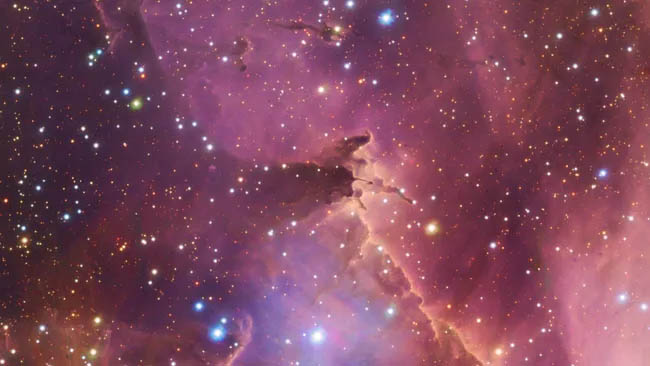Science: Motes of gas and dust are moving into the depths of space while countless stars shine in this image of a distant stellar nursery. Still, as impressive as the snapshot is, it doesn’t seem to capture anything special. “Do you feel lost looking at this week’s photo?” the European Southern Observatory (ESO) wrote in a statement accompanying the 1.5-billion-pixel image. Exploring this gas cloud means “finding your way among the countless newborn stars born in this vast stellar nursery.”
The nursery’s vast pocket, taken by ESO’s VLT Survey Telescope in Chile, really surrounds you. This image captures the brightest piece of the so-called Running Chicken Nebula, a distant gas cloud toward the constellation Centaurus, named for its distinctive hen-like appearance. The region, known as IC 2948, looks like the cosmic bird’s head to some and its rear end to others. The IC 2948 patch is dotted with “plumes” of bright gas and dust as well as blue stars, a colour that is a sign of the hot and young existence of stellar bodies.
The stars are bright, but by no means happy, ESO said. The intense radiation blasted by the stars into space sweeps away surrounding material, creating patches of space in which they reign. “Here, we see creeping dark clouds, shaped like open hands to capture the blooming stars around them,” ESO said. Telescope images of the Running Chicken Nebula and various other nebulae reveal at least some survivors of the radiation blast: individual compact, dark pieces of gas and dust appear against the nebula’s bright background. When German-British astronomer William Herschel first saw a globular in his telescope, he exclaimed: “Mein Gott, da ist ein Loch im Himmel.” (Oh my God, there’s a hole in the sky.) These “holes” are now called Bok globules, named after Dutch-American astronomer Bart Bok, who first observed the dark clouds in the 1940s and likened them to insects’ cocoons. (The set of Bok globules in IC 2948 are more specifically called Thackeray’s globules, after their discoverer, David Thackeray.)
